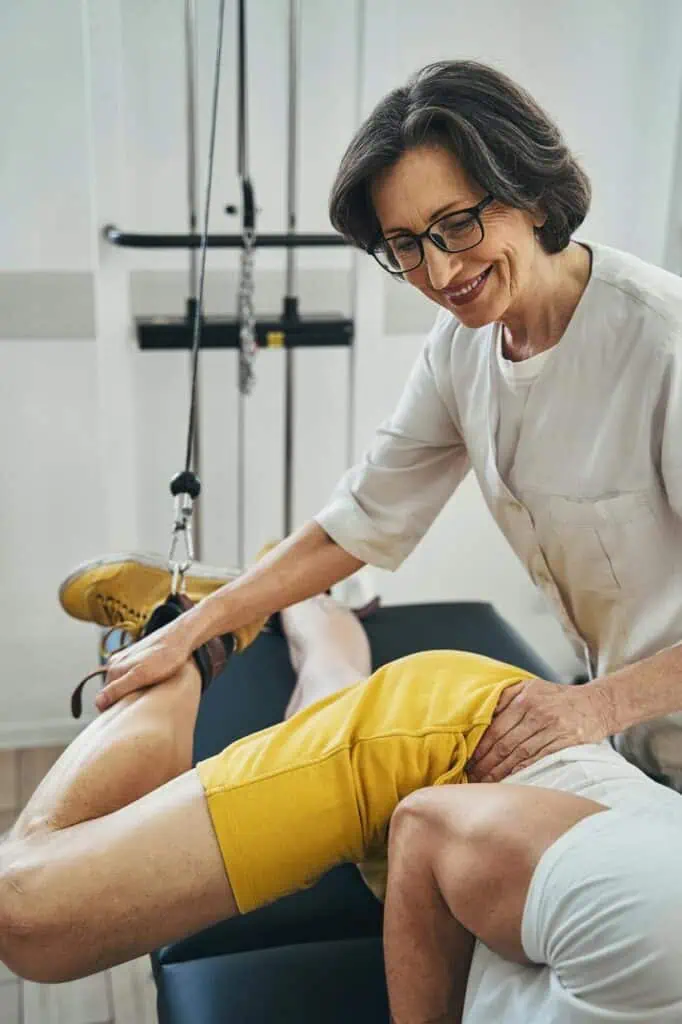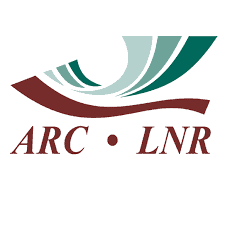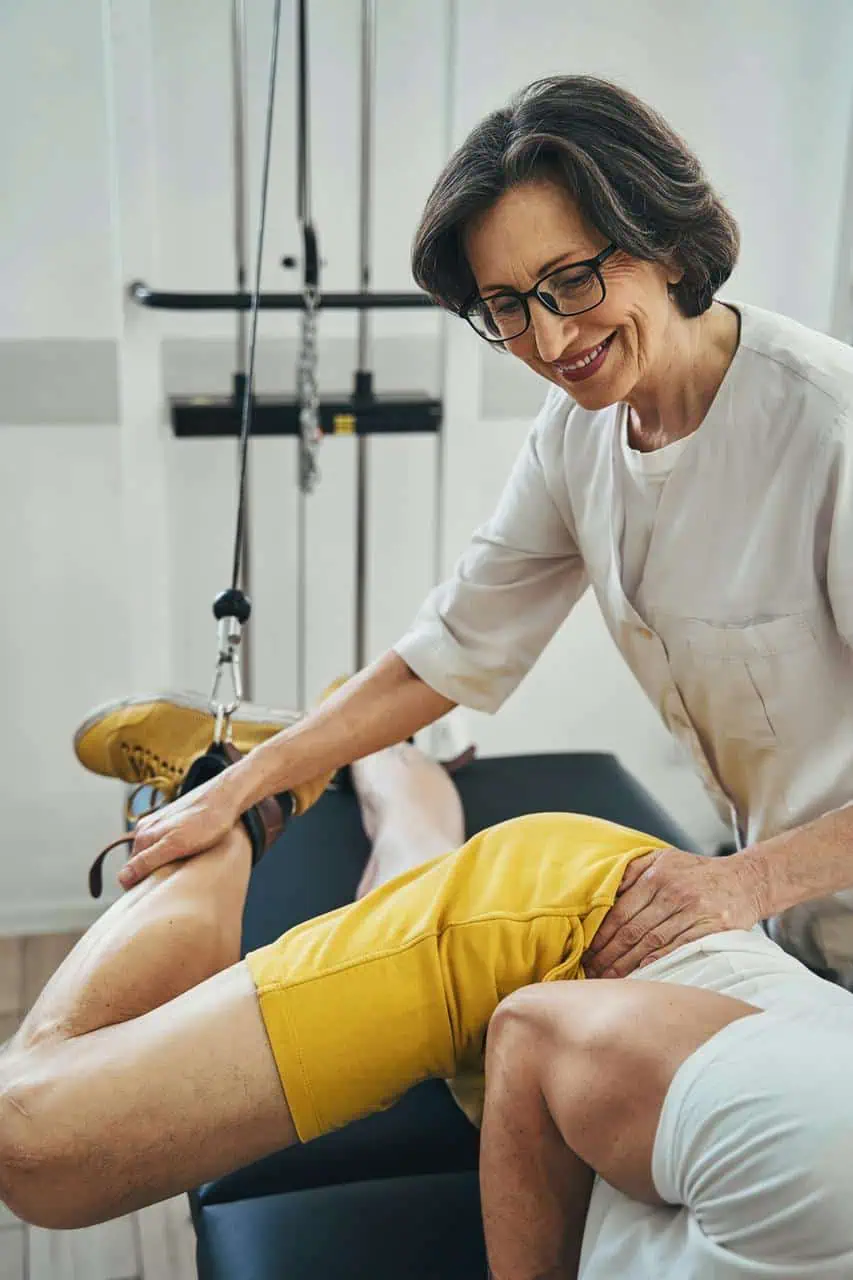Advancing Rehabilitation and Movement Science

Rehabilitation Therapy Careers
The Physical Therapist profession represents a dynamic healthcare specialty focused on restoring and improving human movement, dedicated to helping patients regain mobility, recover from injuries, and manage chronic pain through therapeutic exercises and treatments.
These movement specialists combine scientific knowledge with hands-on clinical skills to address conditions ranging from sports injuries and post-surgical recovery to neurological disorders and age-related mobility challenges.
Modern physical therapists work in diverse environments—from hospital settings and outpatient clinics to sports medicine facilities, rehabilitation centers, schools, and home health services. This role is part of our Health Care & Community Services career cluster.
This comprehensive guide explores the evolving landscape for rehabilitation professionals, detailing the extensive education, specialized skills, and patient-centered approach required to succeed in this rewarding healthcare field while highlighting pathways for career advancement and specialization opportunities in various physical therapy domains.
Trends in Sports Therapy and Physical Rehabilitation
The global demand for qualified Physical Therapists continues to grow as healthcare systems increasingly recognize the value of movement specialists in recovery, prevention, and wellness, creating consistent need for rehabilitation expertise across clinical settings. Today’s physical therapists are essential providers in hospitals, outpatient clinics, rehabilitation centers, and sports therapy facilities. The profession stands at the intersection of movement science, clinical medicine, and patient-centered care.
Several key trends are reshaping the physical therapy landscape:
- The integration of technology has transformed assessment and treatment approaches, with advanced motion analysis, telerehabilitation, and wearable monitoring enhancing traditional techniques
- The growing emphasis on preventive and wellness services has expanded the physical therapist’s role beyond injury treatment to include injury prevention and performance optimization
- The increasing focus on specialized expertise has created demand for therapists with advanced skills in areas like sports rehabilitation, neurological recovery, and pediatric development
- The rise of direct access has empowered physical therapists as primary movement specialists who can evaluate and treat patients without physician referral in many regions
- The expansion of interdisciplinary collaboration has positioned physical therapists as integral members of comprehensive healthcare teams
The field also faces important challenges, including adapting to changing payment models, managing increasing documentation requirements, defining optimal treatment dosages, and demonstrating measurable outcomes. As musculoskeletal and neurological conditions continue to significantly impact global health, physical therapists who combine evidence-based practice with innovative approaches and excellent patient care remain in high demand across healthcare systems worldwide.
Physiotherapy Job Availability & Average Pay Grade: Global Comparison
Rehabilitation Specialist Jobs Availability by Sector
Physical Therapist positions offer diverse employment prospects in healthcare settings worldwide, with opportunities in these sectors:
- Hospitals: Inpatient rehabilitation positions treating acute conditions and post-surgical recovery
- Outpatient Clinics: Roles in private practices and ambulatory care centers
- Rehabilitation Facilities: Positions in specialized recovery centers for intensive therapy
- Sports Medicine Centers: Roles focused on athlete rehabilitation and performance
- Pediatric Settings: Specialized positions in schools, children’s hospitals, and early intervention
- Home Health Agencies: In-home therapy services for patients with mobility limitations
- Corporate Wellness Programs: Injury prevention and ergonomic consulting positions
Popular regions for Physical Therapist jobs include:
- United States: Strong demand with direct access practice in most states
- United Kingdom: Opportunities within NHS and private physiotherapy practices
- Canada: Well-established positions across provincial healthcare systems
- Australia/New Zealand: Favorable job market with good work-life balance
- European Union: Particularly strong opportunities in Germany, Scandinavia, and the Netherlands
- Gulf States: Developing healthcare systems with premium compensation for expatriate therapists
- Asia: Expanding rehabilitation services in countries like Singapore, Japan, and Hong Kong
Most positions require completion of an accredited physical therapy program, typically at the doctoral level (DPT) in the United States and equivalent master’s or bachelor’s degrees internationally, plus government licensure or registration.
Average Rehabilitation Specialist Salary Comparison (Annual)
| Region | Early Career | Mid-Career | Senior/Specialized |
| USA | $70,000-$85,000 | $85,000-$100,000 | $100,000-$120,000+ |
| UK | £35,000-£45,000 | £45,000-£60,000 | £60,000-£75,000+ |
| Canada | CAD $65,000-$80,000 | CAD $80,000-$95,000 | CAD $95,000-$110,000+ |
| Australia | AUD $75,000-$90,000 | AUD $90,000-$105,000 | AUD $105,000-$120,000+ |
| New Zealand | NZD $70,000-$85,000 | NZD $85,000-$100,000 | NZD $100,000-$110,000+ |
| Europe | €40,000-€55,000 | €55,000-€70,000 | €70,000-€90,000+ |
| Asia | $30,000-$50,000 | $50,000-$65,000 | $65,000-$80,000+ |
Salaries vary significantly based on healthcare system structure, practice setting, geographical location, specialization, and advanced credentials. Many positions include productivity incentives, continuing education allowances, and benefits packages that can substantially enhance total compensation. Private practice ownership offers potential for higher earnings but comes with business management responsibilities.
Rehabilitation Science Career Advancement Grade: ⭐⭐⭐⭐⭐ (Very High)
The career potential for Physical Therapists is exceptionally strong, with particularly promising advancement opportunities in these areas:
- Clinical Specialization: Board certification in areas like orthopedics, neurology, sports, or pediatrics
- Advanced Practice: Development of expertise in specialized techniques or patient populations
- Leadership Development: Progression to clinic director, rehabilitation manager, or department head
- Education and Research: Opportunities in academic teaching and clinical research
- Entrepreneurship: Private practice ownership and innovative service development
Career advancement typically depends on continuing education, specialized certifications, and demonstrated clinical excellence. With appropriate qualifications and experience, physical therapists can advance to clinical specialist positions, management roles, academic appointments, or independent practice ownership with greater autonomy and compensation.
Essential Skills for Physiotherapy Professionals: Key Requirements
Clinical Evaluation & Treatment Planning
- Movement Analysis: Exceptional ability to assess biomechanics and identify movement dysfunctions
- Diagnostic Reasoning: Skills in determining underlying causes of functional limitations
- Manual Examination: Proficiency in hands-on assessment of tissue mobility and integrity
- Outcome Measurement: Expertise in selecting and administering appropriate functional tests
- Individualized Planning: Ability to develop targeted interventions based on specific findings
Therapeutic Intervention & Manual Techniques
- Manual Therapy: Skills in joint mobilization/manipulation and soft tissue techniques
- Therapeutic Exercise: Expertise in designing progressive exercise programs for various conditions
- Modality Application: Knowledge of appropriate use of physical agents and electrotherapy
- Neuromuscular Techniques: Proficiency in methods to improve motor control and coordination
- Pain Management: Understanding of multimodal approaches to pain reduction and management
Patient Education & Motivation
- Health Literacy Adaptation: Ability to explain complex concepts in accessible language
- Self-Management Training: Skills in teaching patients home programs and self-care
- Motivational Interviewing: Techniques to enhance adherence and behavior change
- Progress Communication: Capacity to effectively discuss improvement and expectations
- Preventive Education: Expertise in injury prevention and wellness promotion
Professional Practice & Collaboration
- Interprofessional Communication: Skills in effective collaboration with healthcare team members
- Documentation Excellence: Ability to create comprehensive, compliant clinical records
- Evidence-Based Practice: Commitment to integrating current research with clinical decisions
- Ethical Decision-Making: Adherence to professional standards and patient-centered care
- Time Management: Efficiency in providing quality care within scheduling constraints
Professional Qualifications
- Education: Doctoral degree (DPT) in the US, or equivalent master’s/bachelor’s internationally
- Licensure/Registration: Government credential required in all practice locations
- Certification: Optional board certifications in clinical specialties
- Continuing Education: Ongoing professional development to maintain credentials
- Professional Membership: Participation in physical therapy associations and specialty groups
Professionals who combine strong clinical reasoning with excellent hands-on skills and effective communication are particularly well-positioned for career success in physical therapy. The most successful therapists balance technical expertise with empathy and patient education to achieve optimal functional outcomes.
Rehabilitation Therapy Career Paths: From New Graduate to Clinical Specialist
Entry-Level Physical Therapy Positions
Staff Physical Therapist
- Providing direct patient care in supervised settings
- Developing clinical skills across diverse patient populations
- Building confidence in assessment and intervention
- Average salary range: $70,000-$80,000
Rehabilitation Team Member
- Working within interdisciplinary teams in hospitals or rehab centers
- Collaborating with occupational therapists, speech therapists, and physicians
- Developing skills in complex case management
- Average salary range: $72,000-$85,000
Traveling Physical Therapist
- Completing short-term assignments in various locations
- Gaining diverse clinical experiences across different settings
- Building adaptability and broad clinical exposure
- Average salary range: $75,000-$90,000 (often with housing allowance)
Mid-Career Physical Therapy Specialization
Orthopedic Physical Therapist
- Specializing in musculoskeletal conditions and injuries
- Developing advanced manual therapy and exercise prescription skills
- Often pursuing orthopedic clinical specialist certification
- Average salary range: $85,000-$95,000
Neurological Rehabilitation Specialist
- Focusing on stroke, traumatic brain injury, and neurological disorders
- Developing expertise in motor learning and neuroplasticity principles
- Often pursuing neurologic clinical specialist certification
- Average salary range: $85,000-$95,000
Sports Physical Therapist
- Specializing in athlete rehabilitation and performance enhancement
- Working with sports teams or in specialized sports medicine centers
- Often pursuing sports clinical specialist certification
- Average salary range: $85,000-$100,000
Senior-Level Physical Therapy Leadership
Clinic Director/Manager
- Overseeing operations of physical therapy clinics or departments
- Managing staff, budgets, and quality improvement initiatives
- Balancing clinical and administrative responsibilities
- Average salary range: $95,000-$110,000
Clinical Specialist/Mentor
- Serving as advanced practitioner and clinical resource
- Providing mentorship to less experienced therapists
- Often holding board certification in clinical specialty
- Average salary range: $90,000-$110,000
Academic Clinical Coordinator
- Overseeing clinical education for physical therapy programs
- Developing clinical sites and supervising student placements
- Bridging academic and clinical practice environments
- Average salary range: $85,000-$100,000
Advanced Physical Therapy Career Opportunities
Private Practice Owner
- Establishing independent physical therapy practice
- Developing business model and growth strategy
- Managing both clinical and entrepreneurial aspects
- Income range: $100,000-$300,000+ (highly variable)
Physical Therapy Faculty
- Teaching in academic physical therapy programs
- Conducting research and scholarly activities
- Shaping the next generation of physical therapists
- Average salary range: $90,000-$120,000+
Healthcare Administrator
- Directing rehabilitation services for healthcare systems
- Developing strategic planning for therapy services
- Managing multiple departments or service lines
- Average salary range: $100,000-$150,000+
Many physical therapists find their career path evolves through a combination of clinical practice, specialization, and leadership development. While some pursue traditional advancement through clinical specialization or management, others develop entrepreneurial practices or academic careers depending on personal interests and regional opportunities.
Physical Therapist Resume Tips for Rehabilitation Job Applications
Crafting a compelling physical therapist resume requires highlighting both clinical expertise and patient care abilities. The best resume format for physical therapists emphasizes specialized skills, clinical experience, and measurable patient outcomes.
Essential Physiotherapy Resume Sections
Professional Summary
- Concise overview of your clinical focus, experience level, and key qualifications
- Example: “Dedicated Physical Therapist with 6+ years of experience specializing in orthopedic rehabilitation and sports injury recovery. Board-certified Orthopedic Clinical Specialist (OCS) with advanced training in manual therapy techniques and therapeutic exercise prescription. Demonstrated success in returning athletes to pre-injury performance levels and helping post-surgical patients achieve optimal functional outcomes. Committed to evidence-based practice and collaborative care that empowers patients through education and personalized treatment approaches.”
Clinical Skills & Specializations
- Treatment approaches organized by specialty area
- Manual therapy techniques and advanced interventions
- Patient populations and conditions of expertise
- Equipment and modality proficiencies
Patient Care Experience
- Detailed work history in rehabilitation settings
- Types of conditions treated and interventions provided
- Outcome measures and treatment successes
- Caseload management and productivity metrics
Education & Credentials
- Physical therapy degree and specialized training
- Licensure information and specialty certifications
- Continuing education in advanced techniques
- Professional memberships and leadership roles
A well-designed CV maker can help organize these elements effectively, but ensure your unique value proposition as a movement specialist shines through personalization. When applying for physical therapy positions, pair your resume with a targeted cover letter that connects your specific expertise to the facility’s patient population and rehabilitation philosophy.
For new graduates or those transitioning between specialties, emphasize clinical internships, relevant continuing education, and transferable skills to demonstrate your readiness for the specific setting. Your application letter should highlight your treatment approach and commitment to patient-centered rehabilitation.
Interview Questions for Physical Therapists: Preparation Guide
The interview process for Physical Therapy positions typically explores both clinical reasoning and hands-on skills. Employers seek candidates who combine technical expertise with effective patient interaction and team collaboration.
Common Rehabilitation Specialist Interview Questions and Response Strategies
Clinical Reasoning & Treatment Approach
- “Describe your approach to evaluating and treating a patient with low back pain.”
- Outline your systematic assessment process
- Explain your clinical reasoning for determining interventions
- Discuss how you individualize treatment based on findings
- Share examples of successful outcomes with similar patients
- “How do you determine when a patient is ready for discharge?”
- Detail your outcome measurement approach
- Explain functional goal achievement criteria
- Discuss home program development for continued progress
- Share your philosophy on promoting patient independence
Specialized Therapeutic Skills
- “What manual therapy techniques do you find most effective and why?”
- Describe specific techniques in your clinical toolbox
- Explain when and why you select particular approaches
- Discuss integration with exercise and other interventions
- Share examples of how these techniques have benefited patients
- “How do you design therapeutic exercise programs for different patients?”
- Outline your exercise prescription methodology
- Explain progression principles and parameters
- Discuss modifications for various patient populations
- Share examples of creative exercise solutions for challenging cases
Professional Interaction & Development
- “How do you handle a patient who isn’t making expected progress?”
- Detail your reassessment approach
- Explain how you modify treatment plans
- Discuss interdisciplinary collaboration when appropriate
- Share examples of overcoming plateaus in patient progress
- “How do you stay current with advances in physical therapy practice?”
- Outline your continuing education strategy
- Explain how you implement new evidence into practice
- Discuss professional networking and knowledge sharing
- Share recent examples of practice changes based on new learning
Physiotherapy Interview Preparation Tips
- Research the Specific Practice Setting
- Understand the patient population and common conditions treated
- Research the facility’s treatment philosophy and specializations
- Identify equipment and therapeutic approaches they utilize
- Review their reputation and quality outcomes if available
- Prepare Clinical Case Examples
- Select examples demonstrating clinical reasoning
- Prepare cases showing successful outcomes with challenging patients
- Consider scenarios demonstrating interdisciplinary collaboration
- Have examples ready for both common and complex conditions
- Review Technical Knowledge and Skills
- Refresh understanding of evidence for common interventions
- Be prepared to discuss specific manual techniques
- Consider how to explain your treatment rationale clearly
- Review outcome measures relevant to the setting
- Develop Questions About the Position
- Prepare inquiries about typical caseload and patient populations
- Develop questions about mentorship and continuing education support
- Consider asking about productivity expectations and documentation systems
- Plan questions about team dynamics and collaboration opportunities
Successful physical therapy interviews require demonstrating both clinical competence and interpersonal skills, as employers seek candidates who can provide excellent care while working effectively with patients, families, and interdisciplinary teams.
Latest Advancements in Rehabilitation and Injury Recovery: Staying Current in Practice
Maintaining clinical excellence in physical therapy requires continuous engagement with evolving research, therapeutic techniques, and rehabilitation technologies. Contemporary movement specialists must balance foundational skills with innovative approaches to optimize patient recovery and function.
Emerging Treatment Approaches
- Blood Flow Restriction Training: Controlled restriction combined with low-load exercise for strength gains
- Instrument-Assisted Soft Tissue Mobilization: Specialized tools for myofascial treatment
- Dry Needling: Targeted technique for myofascial trigger points and pain management
- Pain Neuroscience Education: Advanced approaches to understanding and addressing chronic pain
- Movement System Impairment: Classification-based intervention for movement dysfunction
Technology-Enhanced Rehabilitation
- Virtual Reality Rehabilitation: Immersive environments for motor learning and engagement
- Motion Analysis Technology: Advanced systems for detailed movement assessment
- Telerehabilitation Platforms: Remote delivery of therapeutic services and monitoring
- Wearable Biofeedback Devices: Real-time monitoring and feedback during exercise
- Robotic-Assisted Therapy: Technological support for neurological rehabilitation
Evidence-Based Practice Evolution
- Clinical Practice Guidelines: Standardized recommendations for specific conditions
- Outcome Measurement Tools: Validated assessments for documenting functional changes
- Dosage Optimization: Research on optimal frequency, intensity, and duration of interventions
- Predictive Analytics: Tools for identifying patients likely to respond to specific approaches
- Precision Rehabilitation: Targeted interventions based on individual patient factors
Successful physical therapists develop systematic approaches to evaluating and incorporating new developments, balancing innovation with fundamental principles of movement science and rehabilitation. Participation in professional associations, regular continuing education, and critical appraisal of emerging evidence are essential for maintaining current knowledge in this evolving healthcare specialty.
Trends in Sports Therapy and Physical Rehabilitation: Future Directions
The field of physical therapy continues to evolve through advancing research, technological innovation, and changing healthcare delivery models. Several key trends are shaping the future practice landscape for rehabilitation specialists.
Integrated and Specialized Care Models
- Prevention-Focused Practice: Expanding emphasis on injury prevention and wellness services
- Population Health Integration: Addressing movement health across community populations
- Direct Access Expansion: Growing autonomous practice without physician referral requirements
- Specialization Depth: Increasing subspecialization within traditional physical therapy domains
- Interdisciplinary Collaboration: Enhanced team approaches to complex conditions
Technology and Digital Transformation
- Artificial Intelligence Applications: Clinical decision support and outcome prediction tools
- Digital Therapeutics: App-based interventions with monitoring and progression capabilities
- Telehealth Expansion: Hybrid models combining in-person and remote care delivery
- Augmented Reality Training: Enhanced visualization for patient education and exercise instruction
- Data Analytics Integration: Using large datasets to inform clinical decision-making
Professional Evolution and Practice Models
- Doctoral-Level Preparation: Continuing advancement of entry-level education requirements
- Value-Based Payment Models: Compensation structures based on outcomes rather than services
- Primary Movement Provider Role: Positioning as entry point for musculoskeletal care
- Advanced Practice Credentialing: Expanded scope through specialized certification pathways
- Entrepreneurial Innovation: New business models and service delivery approaches
As these trends reshape physical therapy practice, successful rehabilitation professionals will need to balance hands-on skills with technological adaptation, incorporate emerging evidence while maintaining clinical judgment, and adapt to evolving healthcare delivery models while preserving the core value of optimizing human movement and function through personalized, patient-centered care.
Explore More in This Industry
Looking for other career options in this field?
👉 View more Health Care & Community Services careers.
Resources & Organizations
These featured organizations play an active role in advancing pest management, scientific research, and agricultural development through education, policy, and innovation.

The African Association of Insect Scientists (AAIS) is a professional body committed to strengthening entomological science across Africa through research, education, and pest management innovation.
Visit Site →

The New Zealand Plant Protection Society promotes the science and practice of plant protection through conferences, publications, and collaboration with growers, researchers, and pest control professionals.
Visit Site →

The Agricultural Research Council of South Africa – Plant Protection leads national research efforts in crop protection, biosecurity, pest diagnostics, and integrated pest management (IPM) for sustainable agriculture.
Visit Site →
These organizations are featured for their outstanding contributions to pest management science, training, and global agricultural development.
This Physical Therapist Career Guide provides general information about the profession globally. Specific requirements, compensation, and opportunities may vary by region, healthcare system, and individual qualifications. Always research current conditions in your target sector when making career decisions.
